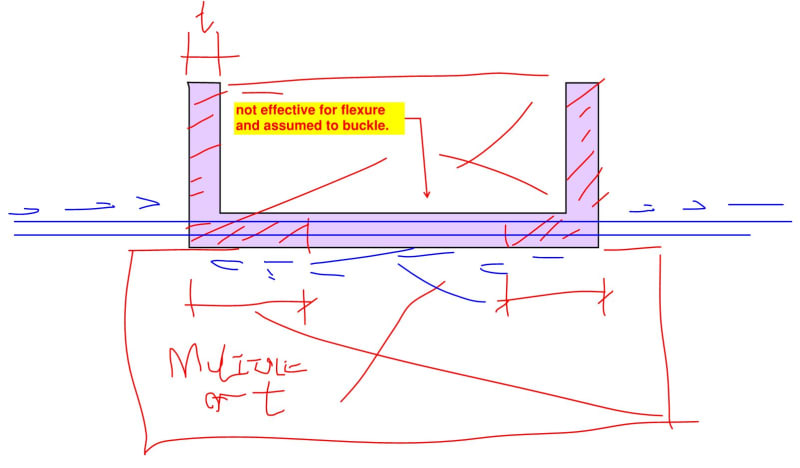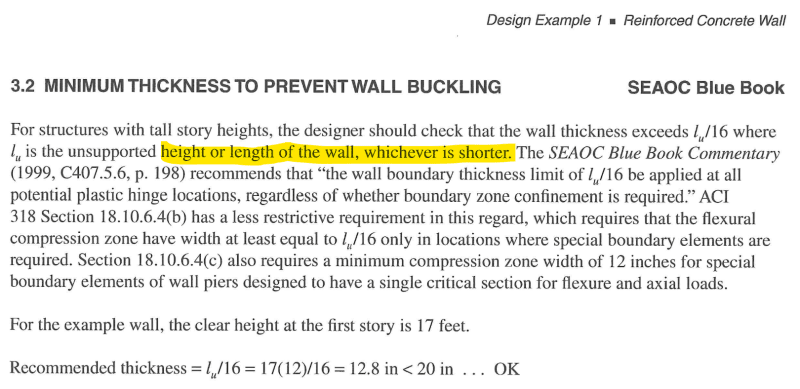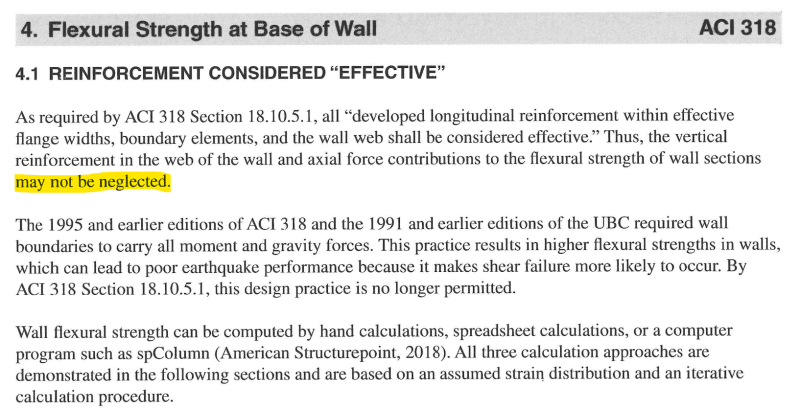I have a project with "c" shaped concrete core walls for both shear and gravity.
The walls surround an elevator core, so on the "inside" of the "c" shape, there is no floor. On the other side of the web, there is a stair opening, so the web of the wall group is technically unbraced for 5 stories. There is always a floor on the outside portion of the flanges, so those are braced.
My question is when designing these as a group, can you still consider the unbraced length for axial load as the floor to floor, since the flanges are braced? I cant find any design guidance on this topic.
The walls surround an elevator core, so on the "inside" of the "c" shape, there is no floor. On the other side of the web, there is a stair opening, so the web of the wall group is technically unbraced for 5 stories. There is always a floor on the outside portion of the flanges, so those are braced.
My question is when designing these as a group, can you still consider the unbraced length for axial load as the floor to floor, since the flanges are braced? I cant find any design guidance on this topic.


![[dazed] [dazed] [dazed]](/data/assets/smilies/dazed.gif)


